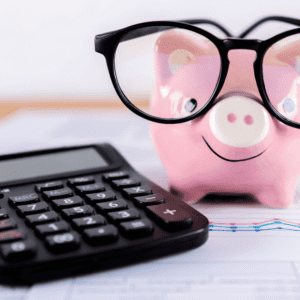What is the buyer’s journey?

As a buyer, do you want to be prospected, or demo’d, or closed? The answer is almost always no. This is because it depends on which stage of the journey you’re in. The buyer’s journey is the series of steps a buyer makes before making a purchase. It is a crucial part of understanding your ideal customer and your inbound strategy. There are 3 stages: Awareness, Consideration, and Decision.
For awareness, these steps add zero value to a buyer. Buyers are looking for additional information about your product that can’t be found online.
As a business owner or a salesperson, you can personalise your sales process to the buyer’s context by understanding the buyer’s journey. Whether you’re selling directly to customers or you’re b2b, in this blog post, we’ll define the buyer’s journey, and show you how to think through it when attracting new prospects – from leads to customers and to being delighted.
Why does the buyer’s journey matter?
The buyer’s journey is the process buyers go through to become aware of, consider and evaluate, and decide to purchase a new product or service.
The journey consists of a three-step process:
- Awareness Stage: The buyer realises they have a problem.
- Consideration Stage: The buyer defines their problem and researches options to solve it.
- Decision Stage: The buyer chooses a solution.
The graphic below illustrates a sample buyer’s journey for the simple purchasing decision of a doctor visit during an illness.

How to Define Your Company’s Buyer’s Journey
If you don’t have an intimate understanding of your buyers, conduct a few interviews with customers, prospects, and colleagues to get a sense of the buying journey. Here are some questions you should ask to put together the buyer’s journey for your business.
Awareness Stage
During the Awareness stage, buyers identify their challenge or an opportunity they want to pursue. They also decide whether or not the goal or challenge should be a priority. In order to fully understand the Awareness stage for your buyer, ask yourself:
- How do buyers describe their goals or challenges?
- How do buyers educate themselves on these goals or challenges?
- What are the consequences of inaction by the buyer?
- Are there common misconceptions buyers have about addressing the goal or challenge?
- How do buyers decide whether the goal or challenge should be prioritized?
Consideration Stage
During the Consideration stage, buyers have clearly defined the goal or challenge and have committed to addressing it. They evaluate the different approaches or methods available to pursue the goal or solve their challenge. Ask yourself:
- How do buyers educate themselves on the various categories?
- What categories of solutions do buyers investigate?
- How do buyers perceive the pros and cons of each category?
- How do buyers decide which category is right for them?
Decision Stage
In the Decision stage, buyers have already decided on a solution category. For example, they could write a pro/con list of specific offerings and then decide on the one that best meets their needs. Questions you should ask yourself to define the Decision stage are:
- What criteria do buyers use to evaluate the available offerings?
- When buyers investigate your company’s offering, what do they like about it compared to alternatives? What concerns do they have with your offering?
- Who needs to be involved in the decision? For each person involved, how does their perspective on the decision differ?
- Do buyers have expectations around trying the offering before they purchase it?
- Outside of purchasing, do buyers need to make additional preparations, such as implementation plans or training strategies?
The answers to these questions will provide a robust foundation for your buyer’s journey. Once you know these answers, you can tailor your content and website to meet your users’ needs. The next step is to create content like blog articles, videos, and images.





